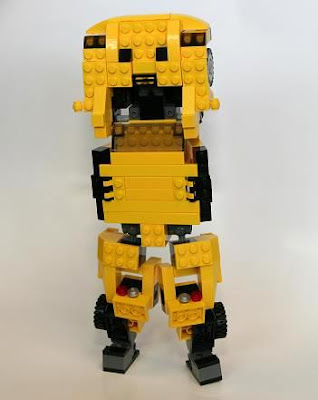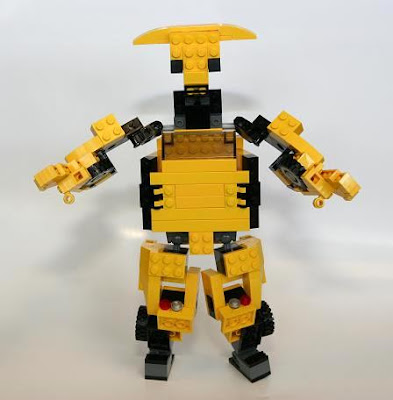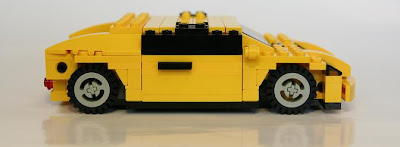As part of the book that I am working on, "Zero to Agile in 90 Days or Less" I decided to include some case studies to illustrate how Agile is different, the problems that people run into and the solutions that they find, as well as the results. One of the companies that I discovered in my search for case studies was Litle & Co. I was immediately struck by their high level of expertise and success with Agile. I couldn't wait to hear how they did it, their trials and tribulations, and I am very grateful to them for allowing me to use them as a case study. The case study speaks for itself, so without further ado...
Case Study: Litle & Co.
Litle & Co. is a leading provider of card-not-present transaction processing, payment management and merchant services for businesses that sell directly to consumers through Internet and Multichannel Retail, Direct Response (including print, radio and television) and Online Services. They interface with the world’s major card and alternative payment networks, such as Visa and Master Card, and PayPal, and must be available 24/7 with no downtime.
During the founding of the company in 2001, the initial team of six developers wanted to use Extreme Programming (XP), an Agile development methodology. Some of the developers had used it before and the rest had read about it and liked the ideas. When they talked to Tim Litle, the founder and Chairman, about using Extreme Programming (XP) they told him “you’ll have to accept that we won’t be able to tell you exactly what we will deliver in 9 months.” Tim said, “That’s fine with me, I’ve never gotten that anyway!” He agreed not only to use it, but to insist on it as the company grew and brought in additional management. He liked the idea that he could change his mind about prioritizing feature development for merchants without cancelling or shelving work in progress.
In 2006, Litle & Co. landed at No. 1 on the Inc. 500 list with $34.8 million in 2005 revenue and three-year growth of 5,629.1 percent. In 2007 Inc. magazine cited Litle & Co.’s 2006 revenue as $60.2 million, representing a three-year growth rate of 897.6% over its 2003 revenue of $6.0 million. How has Litle achieved these impressive results? One factor that they cite is their use of Agile development.
Litle uses many of the XP practices including pair programming. The director of software development, David Tarbox, said “at first I thought I would hate pair programming, but I quickly came to enjoy it and depend on it.” Some of the side benefits that they see in pair programming are better on-boarding of new developers due to the mentoring and training that is inherent in pairing. They also like the fact that all code was developed by two people which provides both redundancy for knowledge of all code and real time code review. It may be that one of the developers for a piece of code is on vacation or otherwise unavailable when somebody needs to talk to them, but it is rarely the case that both are.
They started with weekly iterations then moved to 2 weeks then 3 and are now monthly. They gravitated to a month because it was the easiest cadence for everybody to work with and it meant that the whole company was able to adopt that same cadence. Agile development is part of the psyche of the whole organization. It permeates every aspect of the organization.
One thing that other areas of the organization had to get used to was that they had to be very clear about what they wanted from the development organization because there is no slack time. If you want something and you expect to have it done in the next iteration (monthly cycle), you have to be able to state it very clearly or it won’t even get started. It also means that development is very closely connected to the corporate strategy. For every task, developers ask “is this aligned with our overall direction?”
Agile has had a very positive effect on their hiring. Developers like the fact that Agile provides the additional challenge of solving business problems instead of just technical problems which requires thinking at a higher level. Developers at Litle report that they have a higher level of job satisfaction than in previous companies that were not using Agile because they see the results of their software development efforts installed into production every month. Also, they like the fact that there is much less work which amounts to “implement this spec.”
Litle’s software is hosted at multiple off-site datacenters and they upgrade their software every month like clockwork. In reality, they are doing ~7 week iterations which overlap such that they are releasing monthly. The first week of the development cycle is planning, the next four are development, and the final two are production acceptance testing (PAT) and deployment. Each iteration starts on the first Monday of the month. Some iterations are 4 weeks and others are 5 weeks, but there are a total of 12 iterations a year.
Although updating such a mission-critical application might seem risky to do every month, a lot of the perceived risk comes from the typical lack of fully-automated testing. Litle has a very large body of automated tests (over 30,000) and also has a test system which simulates the usage patterns and load of organizations like Visa and Master Card. Every change is subjected to the same sort of testing that typically takes traditional development organizations multiple person years of effort to achieve. As a result, the quality of their monthly upgrades is unusually high even compared to traditional product release cycles of six months to a year or more.
Their development teams are entirely collocated with no offshore or offsite development teams. For each project they assign a team consisting of multiple pair programming teams. Over time they have grown to a development team of 35 including QA and a codebase that contains 50,000 files including test cases and have had to add practices in order to scale XP. The biggest problem they ran into as they have grown was integration of newly developed code into the existing codebase. To address this, in 2007 they added the practice of Multi-Stage Frequent Integration to their implementation of XP. They do frequent integration instead of continuous integration because a full build/test cycle takes 5 hours.
Prior to implementing Multi-Stage Frequent Integration, they would have to manually pore over all build and test failures to determine which change caused which failures. This was done by very senior developers that were familiar with all aspects of the system to be able to understand complex interactions between unrelated components of the system.
Using Multi-Stage Frequent Integration, each project works against their own team branch, merging changes from the mainline into their team branch every day or two, and doing their own build/test/cycle with just that team’s changes.
Thus, any failure must be a result of one of their changes. When the build/test cycle is successful, the team then merges their changes into the mainline. As a result, any team-specific problems are identified and removed prior to mainline integration and the only problems that arise in the mainline are those that are due to interactions between changes from multiple teams. The isolation also simplifies the job of figuring out what changes may have caused a problem because they only have to look at changes made by a single team, not the changes made by all developers.
Tests and code are written in parallel for each work item as that work item is started. They do not distinguish between enhancement requests and defects. All assigned work is tracked in their issue tracking system and all work that developers do is associated with a work item in the issue tracking system. This is done to automate compliance as they need to pass biannual SAS70 Type 2 audits and annual Payment Card Industry (PCI) audits.
The PCI audits go smoothly. According to Dave: “You have to do them yearly, we’ve been doing them for 5 years. We’ve never had a problem. If you’re doing development the right way, you’re not going to have a problem with audits, because all they’re checking is that you follow the best practices of software development. You must use source code control, track why changes are made, ensure that the work done aligns with the company’s goals, and that your app meets data security requirements. On the auditors’ first visit, they said passing it was going to be a big problem because of our size (they figured, ‘small’, meant insufficient), and that we would likely have to make a lot of changes to pass. When the audit was complete--the auditors were surprised. They said they had never seen anyone do this good of a job the first time out.”
Dave also sees their long track record of successful use of Agile as a competitive advantage: “Because we have our monthly releases, our sales people are able to work with our product people to adjust the company priorities for what makes the most sense for the business. Rather than having to pick everything we need to fit in for the year now and then get together again in a year, it becomes a regular monthly meeting where they look at the priorities together. So if there is a vertical we’re not in yet or there’s a vertical that we are trying to expand in or there’s something that makes sense for the business, if we decide as a company we should go after that business, we bid on it.”
More Information
I look forward to any questions about the case study. By the way, if you are an AccuRev user, keep a look out for your invitation to the local user group meeting. David Tarbox will be speaking about his experiences using AccuRev for Agile Development.
In the meantime, you may be interested in learning more about Litle & Co., Multi-Stage Continuous Integration, or AccuRev.
If you would be interested in participating in an Agile case study for the book, please contact me.
TOC: Zero to Hyper Agile in 90 Days or Less
Thursday, May 22, 2008
Thursday, May 15, 2008
Upcoming Conference Sessions
Agile 2008 - August 4th - 8th
I will be doing three sessions at Agile 2008 in Toronto. If you are going, I hope you will consider attending one of my sessions. In any case, I look forward to meeting you there. Agile 2008 promises to be a truly great conference. The planning process was amazing with lots of great discussion of potential proposals.
Here are the three sessions that I will be doing:
Questioning the Perception of Agile (Full Listing)
There are many misperceptions of Agile. This session is mainly for Agile advocates. It is a facilitated discussion about common misperceptions/misconceptions and ways to alleviate them.
Calling All Agile Skeptics, The Curious, and Die-Hard Non-Agile (Full Listing)
If you are looking for a place to either air your skepticism/questions or respond (helpfully) to skeptics/questions, this will be a facilitated forum for both. Please bring an open mind, your sense of humor, and at least one anecdote to share. Participants will be expected to share the floor and help to keep the atmosphere fun and relaxed.
See Large Scale Multi-Stage Continuous Integration in Real Time (Full Listing)
Multi-Stage Continuous Integration is a way to scale CI to larger teams as well as a way to make CI more effective for teams of any size. For a preview, I have a series of posts on the topic. This session will show a real-time environment using AccuRev, Cruise Control, and Jira with hundreds of scripted developers resolving issues, making changes, causing builds to fail and pass, etc.
SD Best Practices, October 27th - 30th
Introduction to Multi-Stage Continuous Integration (Full Listing)
Multi-Stage Continuous Integration is a way to scale CI to larger teams as well as a way to make CI more effective for teams of any size. For a preview, I have a series of posts on the topic.
Agile Development Practices, November 10th - 14th
A full list of sessions is TBD soon, but all other details are available now and registration is open.
Introduction to Multi-Stage Continuous Integration (Details TBD)
Multi-Stage Continuous Integration is a way to scale CI to larger teams as well as a way to make CI more effective for teams of any size. For a preview, I have a series of posts on the topic.
Calling All Agile Skeptics, The Curious, and Die-Hard Non-Agile (Details TBD)
If you are looking for a place to either air your skepticism/questions or respond (helpfully) to skeptics/questions, this will be a facilitated forum for both. Please bring an open mind, your sense of humor, and at least one anecdote to share. Participants will be expected to share the floor and help to keep the atmosphere fun and relaxed.
I will be doing three sessions at Agile 2008 in Toronto. If you are going, I hope you will consider attending one of my sessions. In any case, I look forward to meeting you there. Agile 2008 promises to be a truly great conference. The planning process was amazing with lots of great discussion of potential proposals.
Here are the three sessions that I will be doing:
Questioning the Perception of Agile (Full Listing)
There are many misperceptions of Agile. This session is mainly for Agile advocates. It is a facilitated discussion about common misperceptions/misconceptions and ways to alleviate them.
Calling All Agile Skeptics, The Curious, and Die-Hard Non-Agile (Full Listing)
If you are looking for a place to either air your skepticism/questions or respond (helpfully) to skeptics/questions, this will be a facilitated forum for both. Please bring an open mind, your sense of humor, and at least one anecdote to share. Participants will be expected to share the floor and help to keep the atmosphere fun and relaxed.
See Large Scale Multi-Stage Continuous Integration in Real Time (Full Listing)
Multi-Stage Continuous Integration is a way to scale CI to larger teams as well as a way to make CI more effective for teams of any size. For a preview, I have a series of posts on the topic. This session will show a real-time environment using AccuRev, Cruise Control, and Jira with hundreds of scripted developers resolving issues, making changes, causing builds to fail and pass, etc.
SD Best Practices, October 27th - 30th
Introduction to Multi-Stage Continuous Integration (Full Listing)
Multi-Stage Continuous Integration is a way to scale CI to larger teams as well as a way to make CI more effective for teams of any size. For a preview, I have a series of posts on the topic.
Agile Development Practices, November 10th - 14th
A full list of sessions is TBD soon, but all other details are available now and registration is open.
Introduction to Multi-Stage Continuous Integration (Details TBD)
Multi-Stage Continuous Integration is a way to scale CI to larger teams as well as a way to make CI more effective for teams of any size. For a preview, I have a series of posts on the topic.
Calling All Agile Skeptics, The Curious, and Die-Hard Non-Agile (Details TBD)
If you are looking for a place to either air your skepticism/questions or respond (helpfully) to skeptics/questions, this will be a facilitated forum for both. Please bring an open mind, your sense of humor, and at least one anecdote to share. Participants will be expected to share the floor and help to keep the atmosphere fun and relaxed.
Friday, May 09, 2008
The Iterative Design of a Lego Sports Car that Transforms Into a Robot, Part II

In Part I, I talked about how the design of a Lego car that can transform into a robot illustrates the process of iterative design. At the beginning of the project, I had the exact requirements and they didn't change at all from the start of the project to the end. However, just having the right requirements did not mean that I could immediately design something that would meet the requirements. At the end of Part I, I had a Lego car that met many of the basic requirements, but still didn't transform. I was stuck because I didn't have the technology that would meet the rest of the requirements.
Part of iterative design is keeping your eyes open, always looking for ways to intelligently expand the solution space. If the information you need is not already at hand, trying variations of things you already know may not lead to a good solution.
Thinking Outside The Box
I had always eschewed the Bionicle Legos as “not really Lego,” so I hadn't originally considerd those. But then two things happened that breathed new life into my Lego project. My son’s third birthday was coming up, and my wife suggested that we make it a Lego birthday. I was responsible for filling the gift boxes for the guests, and I decided to start by visiting the Lego store to see what they might have.
The Lego store had a wide variety of gifts for $5 or less including Duplo dinosaurs, a pony and princess set, knights on horses, and most importantly (for the project) small Bionicle sets. I had never bought a Bionicle set before, so I had never noticed that many of them had articulated joints. The joints were ball-and-socket parts which were small and had enough friction to make them poseable. They were perfect for the project.
There is another kind of Lego set called Exo-Force which has a completely different technology for doing articulated joints and also has a part which when combined with a Bionicle part provides a third technology for articulated joints.
Creating limbs which can fully fold up is a difficult proposition at best. But, I managed to create a couple of variations that allowed me to create the next version of the project. It didn’t really meet the goals of looking like a sports car or hiding the fact that there was more to it than met the eye. It was quite boxy, had odd proportions, and some of the joints were exposed. It was also fairly fragile. But, it could transform!
Sometimes Flexibility is Constraining
Sometimes software that is too generic or two flexible creates another set of problems such as taking too many resources or being too difficult to configure for the task at hand. The knee and elbow joints of the robot form had the same problem. Because they were fully articulated they were just too darn big and difficult to hide. I knew that these joints didn’t need to have the same degrees of freedom as the shoulder, hip, and ankle joints, but had not previously been able to create a hinge that could fold flat and have the full range of motion required. I repeated the exercise of determining all of the available hinge options and found a couple of new ones. The most promising one was a dual Technic hinge which was perfect for the knees.

For the arms, this hinge was too large. But then I realized that less resistance was required for the arms and a single hinge would do. Perfect! Now I had the robot skeleton, I just needed the car exterior.
Inspired by Elegant Design
Many months later, when looking for a new Lego set for my son, I saw a new car set (#4939) that was perfect for the project. I’m not an artist by any means, so one of the challenges has been finding Lego car designs to emulate. Previously they had always been either too big or too small. At one point I had been very excited about the Ferrari that comes with both red and yellow exterior pieces, but it was double the size I needed. Set #4939 seemed to be the perfect size. It didn’t hurt that it was very cool looking and reasonably priced. I had the feeling that this was it, I was finally going to achieve the goal.
Using set #4939 as inspiration, I was able to layer a car exterior onto the robot skeleton without too much trouble. As a bonus, the head, which had previously never really worked out well, was just there. I was within reach of the goal. But still one problem remained. I couldn’t cover the shoulder and hip joints without preventing transforming. I needed something that would allow the top and bottom parts to slide out and then lock in place. I had created parts that slid from place to place before for other Lego projects, but never something that could also lock in place.
Sliding Into Home
After trying many variations using small hinges to act as the locks, I had something that worked, but it was just too big. It was also very clumsy. Luckily, I was in denial. I forged ahead anyway. I wasn’t sure what to do about it being clumsy, but I was determined to create more room in the model. The most obvious step was to do what they do to create stretch limousines: take a regular limo and stretch it out. I made the whole model a bit longer, wider, and taller while keeping the same overall proportions. I also removed all unnecessary internal parts or replaced them with parts that would still do the job but took up less space.
It wasn’t enough, and I couldn’t stay in denial about the sliding part being clumsy forever. But while I was stretching things out I observed that some of the technic parts would slide around a little bit when I exerted too much pressure on them. Of course, the part that would give depended on the amount of friction. Whichever had less friction was what moved and the other one did not. From that came the solution: two bricks together to anchor the axle, and one brick that moved freely but with enough friction that it would stay wherever it was slid to.

The slider was the last major challenge. Once I had this part, it was just a matter of trial-and-error shifting things around until it all worked. There are two sliders; one for the lower body, and one for the upper body, the following picture shows the car with the upper and lower body pulled out as the first steps of transforming.

After the car has been extended, the legs are unfolded.

Lastly, the arms are extended. The head is also fully articulated.

There is still room for improvement, but at this point I think it is more a matter of aesthetics than mechanical design. I’m happy with the current design and hope that perhaps a Lego fan with more art skills than I will take the design to the next step. My other hope is that perhaps the amazing folks at Lego will start producing transforming Lego sets. And of course, if they were Transformer branded, that would be a wonderful (but not necessary) bonus.
[Get the LDraw model for the car here . ]
Motivation, skill, and experience all play important roles in the design process, but they are no guarantee that you are going to be able to design, let alone build what you have set out to do. It almost always requires trial-and-error, serendipity, creative inspiration, research, and an open mind.
Next: Frequent Releases Improve Code Quality Faster
Thursday, May 01, 2008
The Iterative Design of a Lego Sports Car that Transforms Into a Robot, Part I

In the lead-up to the debut of the movie “Transformers,” there was already plenty of Transformers merchandise available. My son, who was 2 ½ years old at the time was instantly entranced. While my wife was strolling him through the bookstore he grabbed a Transformers calendar without her noticing. When she got to the register he then used his charms to convince her to buy it.
The Challenge
This got me to thinking. Wouldn’t it be fun to build my son a car out of Legos that could transform into a robot? After all, how hard could it be? I decided to give it a shot and I set myself the following design goals and constraints:
- Build a Lego model that has two forms: a sports car and a robot
- Folks looking at it agree that each form is clearly recognizable as that form
- On casual inspection, it doesn’t look like it transforms
- 100% Lego, no other parts, and no glue
- Easily held in one hand
- Strong (parts don’t fall off easily during use)
- Robot form can stand on its own
- The model can easily transform from one form to the other
- Model is completely connected and transformation does not require the addition or removal of any parts
- Fully articulated
As the project progressed, I wasn’t thinking of it as an exercise in iterative design or a formal project, it was always just something I did for fun in my spare time. I didn’t realize the link to iterative design until I started talking to people about the history of the project.
Transforming Requirements Into Working Software
When working with software, even if you have clear requirements that you have validated with users, it is not always clear how you will implement them. The search for a solution has two possible components: thinking about how to do something and implementing something. When thinking about how to do something, that’s really just fantasizing. Of course, it is fantasizing that is focused on producing something real, and it is more likely to produce something real than fantasizing about winning the lottery, but it is still fantasizing.
Requirements, analysis, specifications, and design are all examples of fantasizing. Yes, it is useful to do it, and you will often hit on solutions or eliminate problems much more quickly and much more economically than creating something real without giving it the same amount of thought, but fantasizing is only an approximation of reality, an interlocking web of educated guesses. Not until you actually attempt to create something real will you find out how all of the individual requirements interact and the real costs and difficulty involved. You don’t always find a clear match between requirements and implementation that is cost-effective to implement. In this case you have four paths forward: implement with the closest match and hope for the best, search for new possibilities, invent new possibilities, or shelve the project.
Transforming Lego Car, Iteration 1
The first attempt to build the transforming Lego car didn’t go very well. I was able to create a reasonable looking car which had lots of interior space for the mechanics needed to transform, but creating the sliding parts and the joints proved to be more difficult than I had imagined. I had lots of different hinges, flat parts, special joints, and Technic parts, but all of the possibilities I came up with were either too big, too fragile, too loose, or didn’t support articulation well enough. I was stumped. After a quick trip to the nearby Lego store to see if there was something I had missed, I reluctantly decided to shelve the project.
From a requirements perspective, I had satisfied requirements 2-6, which is half of the requirements. Of course, it was easy to satisfy "doesn't look like it transforms" because it didn't transform at all. :-) From an Agile perspective, the car was fully functional as a car in its own right, and I had discovered lots of valuable information that would help with later iterations of the car.
Little did I know that a hidden bias had kept me from seeing what was right in front of me. It wasn't until a couple of months later that serendipity broke through that bias and brought together the necessary ingredients for the first transforming version of the car.
Next: Part II (of 2)

Subscribe to:
Posts (Atom)